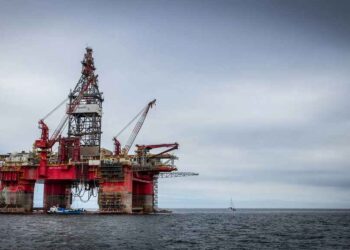The Sabine Pass LNG terminal is spread over an 853 acre site in Cameron Parish, Louisiana, US. The facility is the largest receiving and regasifying terminal in the world with a total send out capacity of 4bcf/d and storage capacity of 16.8bcf. The terminal is owned and operated by Cheniere Energy.
Construction and infrastructure
The Federal Energy Regulatory Commission (FERC) approved the project in December 2004. Ground breaking for phase 1 of the terminal took place in March 2005. This phase came on stream in April 2008 with a send out capacity of 2.6bcf/d. Three storage tanks each with a capacity of 160,000m³ were added to the facility during this phase.
First stage of phase 2 expansion of the terminal was completed in mid-2009. This added two storage tanks and increased the send out capacity of the terminal to 4bcf/d.
The facility can handle 400 LNG vessels a year and features two unloading docks and four dedicated tugs.
Second stage of phase two expansion
The second stage of phase 2 expansion was announced in June 2010, to add liquefaction and gasification capabilities to the terminal. The $1.5bn project will enable the terminal to liquefy and export LNG.
Total cost of the project is estimated at $5.6bn, about $2bn of which will be funded through equity and the rest through debt financing.
The project will add two liquefaction trains with a capacity of 4mtpa each. The new trains will be installed adjacent to the existing facilities. Two additional 1.2bcf/d liquefaction trains may added to the terminal, based on future demand.
“In August 2010, the FERC approved Cheniere’s request for commencing the pre-filing process.”
The existing infrastructure of the terminal will be modified into a bi-directional system. Currently both jetties of the terminal are being used for ship unloading. Following the expansion, one jetty will be used for ship unloading and the other for LNG loading.
Pending regulatory approvals, construction of the project is expected to begin in January 2012 and completed by 2015.
In August 2010, the FERC approved Cheniere’s request for commencing the pre-filing process.
Cheniere also received authorisation from the US Department of Energy / Office of Fossil Energy (DOE/FE) in September 2010 and May 2011 to export LNG to all Free Trade Agreement (FTA) and non-FTA countries respectively.
The FERC approved the expansion project in April 2012. The first train is anticipated to be commissioned in 2015, followed by the second train in six to nine months later.
Processing
The LNG received from ships is transported into insulated storage tanks. From the tanks, it is fed into vaporisers which convert the liquid into a gaseous state. The converted gas is then transported to consumers through the country’s natural gas pipeline network.
The expansion project will utilise ConocoPhillips’ Optimised Cascade Process. The process is based on a two-trains-in-one concept in which two parallel compressors are supplied by one train of liquefaction exchangers. It involves pre-treatment of the raw gas to remove contaminants such as carbon dioxide, hydrogen sulphide and water.
The treated LNG is transported to the liquefaction unit of the plant. The liquefied gas is then cooled and condensed to -2600F in heat exchangers using propane, ethylene and methane as refrigerants. The cooled LNG is transported to the insulated storage tanks, for shipping to consumers.
Technology
Invensys Process Systems (IPS) implemented its Terminal Operations Management System (TOMS) at the facility. The system provides services such as ship tracking, LNG storage tank composition and security monitoring.
IPS also provided its SimSci-Esscor operator training simulation system for the terminal.
Contractors
The engineering, procurement, and construction (EPC) contract for the terminal was awarded to Bechtel Corporation in December 2004. The contract was valued at $647m. Bechtel was responsible for both phases 1 and 2 of the terminal.
“The terminal is owned and operated by Cheniere Energy.”
In May 2005, a consortium of Mitsubishi Heavy Industries America and Zachry Construction Corporation was awarded the EPC contract for three LNG tanks of the terminal.
In July 2006, the consortium received another contract for two LNG storage tanks during phase 2 expansion of the terminal.
PND provided design and construction services for a 1,350ft bulkhead at the terminal.
Emerson supplied various equipments for the LNG storage tanks. The company provided one radar gauge, two servo gauges and two Rosemount Field communication units.
Design, procurement and construction services for the expansion project will be provided by Bechtel under a $3.9bn contract awarded in November 2011.

















































